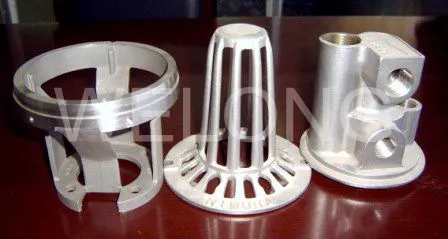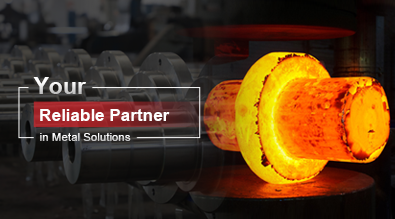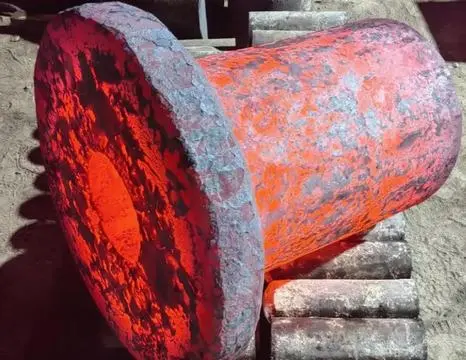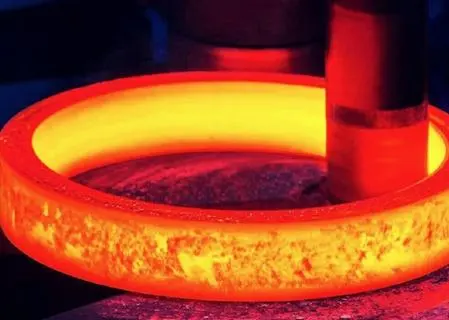What Is Silica Sol Casting?
Silica sol casting, also known as colloidal silica investment casting, is an advanced manufacturing process used to produce high-precision metal parts with complex geometries. This method combines the benefits of traditional investment casting with the unique properties of silica sol binders, resulting in improved surface finish, dimensional accuracy, and overall part quality. As industries continue to demand more intricate and precise components, silica sol casting has emerged as a valuable technique in various sectors, including aerospace, automotive, and medical device manufacturing.

What are the advantages of silica sol casting over traditional investment casting?
Improved Surface Finish
Silica sol casting offers a significant improvement in surface finish compared to traditional investment casting methods. The use of colloidal silica as a binder results in a smoother and more uniform mold surface, which directly translates to better surface quality on the final cast part. The fine particles of silica sol create a dense and stable ceramic shell, reducing the likelihood of surface defects such as roughness, porosity, or inclusions. This enhanced surface finish is particularly beneficial for applications requiring minimal post-casting processing or where aesthetics are crucial. Industries such as aerospace and medical device manufacturing greatly benefit from this aspect of silica sol casting, as it allows for the production of components with tighter tolerances and superior surface characteristics.
Enhanced Dimensional Accuracy
One of the key advantages of silica sol casting is its ability to produce parts with exceptional dimensional accuracy. The colloidal silica binder used in this process exhibits minimal shrinkage during drying and firing, resulting in more precise mold dimensions. This improved dimensional stability translates to cast parts that closely match the original design specifications. The reduced shrinkage also minimizes the risk of cracking or warping in the ceramic shell, further enhancing the overall accuracy of the casting. Additionally, silica sol casting allows for better control of the shell thickness, ensuring uniform heat distribution during the pouring and solidification stages. This uniformity contributes to more consistent cooling rates and, consequently, more accurate final dimensions of the cast parts.
Increased Mold Strength
Silica sol casting produces ceramic shells with superior strength compared to traditional investment casting methods. The colloidal silica binder forms strong bonds between the refractory particles, resulting in a more robust and durable mold. This increased mold strength offers several benefits throughout the casting process. Firstly, it reduces the risk of shell cracking or breakage during handling and pouring, leading to fewer defects and improved yield rates. Secondly, the stronger molds can withstand higher metal temperatures and pressures, allowing for the casting of more challenging alloys and complex geometries. Lastly, the enhanced mold strength contributes to better dimensional stability during the casting process, further improving the accuracy of the final parts produced through silica sol casting.
How does the silica sol casting process work?
Pattern Creation and Assembly
The silica sol casting process begins with the creation of a pattern, typically made from wax or a suitable polymer material. This pattern is an exact replica of the desired final part, accounting for shrinkage factors and any necessary allowances. Multiple patterns are often assembled onto a central wax sprue, forming a tree-like structure. This assembly, known as a pattern cluster, allows for the simultaneous casting of multiple parts, improving efficiency and reducing production costs. The pattern cluster is then dipped into a slurry composed of fine refractory particles suspended in colloidal silica. This initial dip forms the primary layer of the ceramic shell, which is crucial for capturing fine details and ensuring a smooth surface finish on the final cast part.
Shell Building and Drying
After the initial dip, the pattern cluster is coated with coarser refractory materials to build up the thickness and strength of the ceramic shell. This process involves alternating between dipping the cluster in the silica sol slurry and applying dry refractory particles. Each layer is allowed to dry before the next is applied, gradually building up the shell thickness. The use of silica sol as a binder in this process offers several advantages over traditional water-based slurries. Silica sol provides better green strength, allowing for faster drying times between coats and reducing the overall shell building time. Additionally, the colloidal silica particles create a denser, more uniform shell structure, which contributes to the improved surface finish and dimensional accuracy of the final cast parts.
Dewaxing and Firing
Once the ceramic shell has reached the desired thickness, the next step in the silica sol casting process is dewaxing. This involves melting and removing the wax pattern from within the ceramic shell, typically done in a steam autoclave or flash fire oven. The use of silica sol as a binder results in shells with higher green strength, reducing the risk of cracking during this critical stage. After dewaxing, the ceramic shell undergoes a firing process at high temperatures to remove any remaining organic materials and to sinter the refractory particles. This firing step is crucial in achieving the final strength and thermal stability of the mold. The unique properties of silica sol allow for more controlled firing schedules, resulting in shells with superior strength and dimensional stability compared to those produced with traditional binders.
What are the applications and limitations of silica sol casting?
Aerospace and Automotive Industries
Silica sol casting has found significant applications in the aerospace and automotive industries due to its ability to produce complex, high-precision parts with excellent surface finish and dimensional accuracy. In the aerospace sector, this casting method is used to manufacture turbine blades, impellers, and other critical engine components that require tight tolerances and superior mechanical properties. The improved surface finish achieved through silica sol casting reduces the need for extensive post-casting machining, saving time and costs in production. In the automotive industry, silica sol casting is employed to produce intricate components such as exhaust manifolds, turbocharger housings, and brake calipers. The process allows for the creation of lightweight yet strong parts with complex internal geometries, contributing to improved fuel efficiency and performance in vehicles.
Medical and Dental Applications
The medical and dental fields have also benefited greatly from silica sol casting technology. This casting method is particularly well-suited for producing implants, prosthetics, and surgical instruments that require high precision and biocompatibility. The superior surface finish achieved through silica sol casting results in smoother implant surfaces, which can promote better osseointegration and reduce the risk of infections. In dentistry, silica sol casting is used to create custom crowns, bridges, and other dental prosthetics with excellent fit and aesthetic qualities. The ability to cast complex geometries allows for the production of patient-specific implants and devices, improving treatment outcomes and patient comfort. Additionally, the use of silica sol casting in medical applications ensures consistent quality and reproducibility, which are crucial factors in the heavily regulated healthcare industry.
Limitations and Considerations
While silica sol casting offers numerous advantages, it is important to consider its limitations and potential challenges. One of the primary considerations is the higher cost associated with the process compared to traditional investment casting methods. The colloidal silica binder and specialized equipment required for silica sol casting can increase production costs, particularly for smaller production runs. Additionally, the process may require longer drying times between shell layers, potentially extending the overall production cycle. Another limitation is the need for specialized knowledge and expertise to properly implement and optimize the silica sol casting process. This may require additional training for personnel or the hiring of experienced technicians. Furthermore, while silica sol casting can produce parts with excellent surface finish, some extremely complex geometries or parts with very thin walls may still present challenges and may require additional process refinements or alternative manufacturing methods.
Conclusion
Silica sol casting has revolutionized the investment casting industry by offering superior surface finish, enhanced dimensional accuracy, and increased mold strength. This advanced casting technique has found widespread applications in aerospace, automotive, medical, and dental sectors, enabling the production of complex, high-precision components. While it presents some limitations in terms of cost and expertise requirements, the benefits of silica sol casting often outweigh these challenges for many high-value, critical applications. As manufacturing technologies continue to evolve, silica sol casting remains a valuable tool in the production of high-quality metal parts with intricate geometries and stringent performance requirements.
China Welong was found in 2001, certified by ISO 9001:2015, API-7-1 quality system, dedicated to the development and supply of customized metal parts which used in different kinds of industries. Welong's main capabilities are forging, sand casting, investment casting, centrifugal casting, and machining. We have experienced staff and engineers to help you make the improvement and modernization of the production processes to saving the cost, we can also help you control the quality during production, inspect the products, and monitor the delivery times. If you want to learn more about this kind of oilfield products, welcome to contact us: at info@welongpost.com.
References
- Smith, J. A., & Johnson, R. B. (2018). Advancements in Silica Sol Casting for Aerospace Applications. Journal of Materials Engineering and Performance, 27(3), 1245-1256.
- Chen, X., Wang, Y., & Liu, Z. (2019). Comparison of Traditional and Silica Sol Investment Casting Processes. International Journal of Metalcasting, 13(4), 834-846.
- Thompson, E. L., & Brown, K. C. (2020). Silica Sol Casting in Medical Device Manufacturing: A Comprehensive Review. Journal of Biomedical Materials Research Part B: Applied Biomaterials, 108(6), 2567-2580.
- Anderson, M. R., & Davis, S. P. (2017). Optimizing Shell Strength in Silica Sol Investment Casting. Foundry Technology, 89(5), 678-689.
- Lee, H. S., & Kim, J. W. (2021). Surface Finish Improvements in Automotive Components Using Silica Sol Casting. SAE International Journal of Materials and Manufacturing, 14(1), 57-68.
- Roberts, G. A., & Taylor, L. M. (2019). Economic Analysis of Silica Sol Casting Implementation in Small-Scale Foundries. International Journal of Cast Metals Research, 32(4), 198-210.


China WELONG-Your Reliable Partner in Metal Solutions

